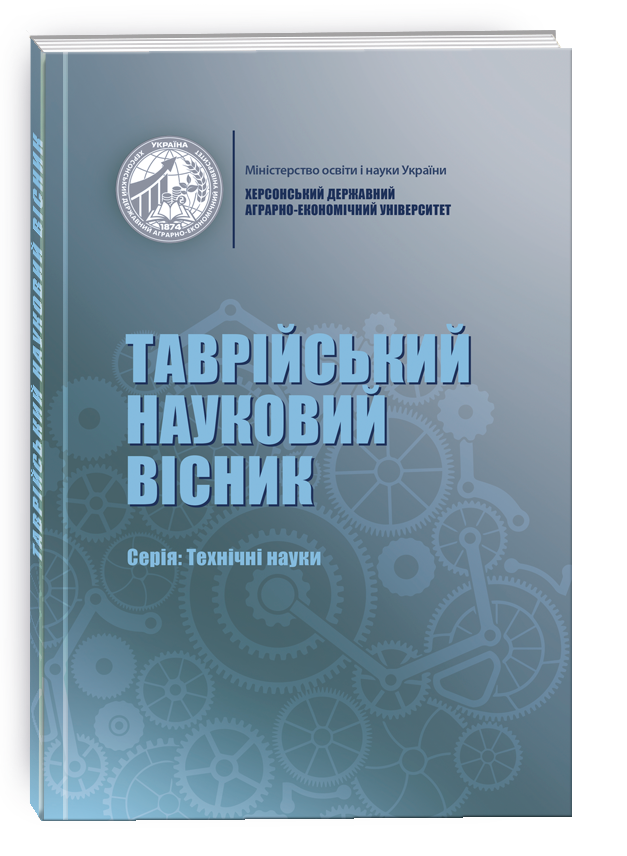DIGITAL TWIN DATA STORAGE FOR INDUSTRIAL ROBOT KINEMATICS
DOI:
https://doi.org/10.32782/tnv-tech.2024.4.10Keywords:
Digital Twin, Data Storage, Industrial Robotics, Kinematics, Denavit-Hartenberg Method.Abstract
In response to the increasing demand for efficient and automated production processes, Digital Twins have emerged as a vital tool for optimising industrial operations and preemptively identifying equipment issues. An important component of the Digital Twin is the storage of historical data on equipment operation. This research focuses on developing a universal database structure for storing position data of various industrial robots, including Cylindrical, SCARA, Articulated, and Cartesian/Gantry robots. The proposed database uses the Denavit-Hartenberg (DH) method, widely recognised for representing robot kinematics. Combining the Denavit-Hartenberg method with relational database technology provides a flexible and scalable solution for managing the diverse and complex data associated with robot configurations. This structure makes it possible to apply this development in industrial environments where robots with different degrees of freedom and different kinematic chains are used. The combination of the Denavit-Hartenberg method with relational database technology provides a flexible and scalable solution for managing diverse and complex data related to robot configurations. The database design supports the creation of Digital Twins for industrial robots, facilitating enhanced operational monitoring, predicting maintenance, identifying wear patterns, detecting abnormal behaviour and predicting potential equipment failures. This approach minimises downtime and extends the lifetime of robotic systems, which ultimately contributes to sustainable production and is in line with the concept of Industry 4.0. In this study, we present a database framework specifically for storing data on the position of equipment nodes. The created entities allow storing data on the position of each robot node. When the position of a node changes, only those Denavit- Hartenberg parameters that have changed are stored in the database. This allows you to optimise memory usage without losing the collected data. The database structure can be expanded by adding data from other sensors installed on the robot or other peripheral devices, or data generated by the Digital Twin. Further research will test the effectiveness of the database structure.
References
Dihan, Md. S., Akash, A. I., Tasneem, Z., Das, P., Das, S. K., Islam, Md. R., Islam, Md. M., Badal, F. R., Ali, Md. F., Ahamed, Md. H., Abhi, S. H., Sarker, S. K., & Hasan, Md. M. (2024). Digital twin: Data exploration, architecture, implementation and future. In Heliyon (Vol. 10, Issue 5, p. e26503). Elsevier BV. https://doi.org/10.1016/j.heliyon.2024.e26503
Huynh, B. H., Akhtar, H., & Sett, M. K. (2019). A Universal Methodology to Create Digital Twins for Serial and Parallel Manipulators. In 2019 IEEE International Conference on Systems, Man and Cybernetics (SMC). IEEE. https://doi.org/10.1109/smc.2019.8914195
Yildiz, E., & Møller, C. (2021). Building a virtual factory: an integrated design approach to building smart factories. In Journal of Global Operations and Strategic Sourcing (Vol. 14, Issue 4, pp. 608–635). Emerald. https://doi.org/10.1108/jgoss-11-2019-0061
Wilson, M. (2015). Industrial Robots. In Implementation of Robot Systems (pp. 19–38). Elsevier. https://doi.org/10.1016/b978-0-12-404733-4.00002-3
Sun, J., Zhou, W., Yan, L., Huang, D., & Lin, L. (2018). Extrusion-based food printing for digitalized food design and nutrition control. In Journal of Food Engineering (Vol. 220, pp. 1–11). Elsevier BV. https://doi.org/10.1016/j.jfoodeng.2017.02.028
Lum, M. J. H., Friedman, D. C. W., Sankaranarayanan, G., King, H., Fodero, K., Leuschke, R., Hannaford, B., Rosen, J., & Sinanan, M. N. (2009). The RAVEN: Design and Validation of a Telesurgery System. In The International Journal of Robotics Research (Vol. 28, Issue 9, pp. 1183–1197). SAGE Publications. https://doi.org/10.1177/0278364909101795
Urhal, P., Weightman, A., Diver, C., & Bartolo, P. (2019). Robot assisted additive manufacturing: A review. In Robotics and Computer-Integrated Manufacturing (Vol. 59, pp. 335–345). Elsevier BV. https://doi.org/10.1016/j.rcim.2019.05.005
Zhang, X., Li, M., Lim, J. H., Weng, Y., Tay, Y. W. D., Pham, H., & Pham, Q.-C. (2018). Large-scale 3D printing by a team of mobile robots. In Automation in Construction (Vol. 95, pp. 98–106). Elsevier BV. https://doi.org/10.1016/j.autcon.2018.08.004
He, Y., Mai, X., Cui, C., Gao, J., Yang, Z., Zhang, K., Chen, X., Chen, Y., & Tang, H. (2019). Dynamic Modeling, Simulation, and Experimental Verification of a Wafer Handling SCARA Robot With Decoupling Servo Control. In IEEE Access (Vol. 7, pp. 47143–47153). Institute of Electrical and Electronics Engineers (IEEE). https://doi.org/10.1109/access.2019.2909657
Izquierdo, R. C., Cukla, A. R., Lorini, F. J., & Perondi, E. A. (2023). Optimal Two-Step Collision-Free Trajectory Planning for Cylindrical Robot using Particle Swarm Optimization. In Journal of Intelligent & Robotic Systems (Vol. 108, Issue 3). Springer Science and Business Media LLC. https://doi.org/10.1007/s10846-023-01903-5
Kaur, M., Yanumula, V. K., & Sondhi, S. (2024). Trajectory planning and inverse kinematics solution of Kuka robot using COA along with pick and place application. In Intelligent Service Robotics (Vol. 17, Issue 2, pp. 289–302). Springer Science and Business Media LLC. https://doi.org/10.1007/s11370-023-00501-6
Filiposka, M., Djuric, A. M., & ElMaraghy, W. (2015). Kinematic Analysis of a 6DOF Gantry Machine. In SAE Technical Paper Series. SAE 2015 World Congress & Exhibition. SAE International. https://doi.org/10.4271/2015-01-0497
Zhenhua, W., Hui, X., Guodong, C., Rongchuan, S., & Sun, L. (2014). A distance error based industrial robot kinematic calibration method. In Industrial Robot: An International Journal (Vol. 41, Issue 5, pp. 439–446). Emerald. https://doi.org/10.1108/ir-04-2014-0319
Wu, L., Crawford, R., & Roberts, J. (2017). An Analytic Approach to Converting POE Parameters Into D–H Parameters for Serial-Link Robots. In IEEE Robotics and Automation Letters (Vol. 2, Issue 4, pp. 2174–2179). Institute of Electrical and Electronics Engineers (IEEE). https://doi.org/10.1109/lra.2017.2723470
Chen, Q., Zhu, S., & Zhang, X. (2015). Improved Inverse Kinematics Algorithm Using Screw Theory for a Six-DOF Robot Manipulator. In International Journal of Advanced Robotic Systems (Vol. 12, Issue 10, p. 140). SAGE Publications. https://doi.org/10.5772/60834
Cohen, A., & Shoham, M. (2020). Hyper Dual Quaternions representation of rigid bodies kinematics. In Mechanism and Machine Theory (Vol. 150, p. 103861). Elsevier BV. https://doi.org/10.1016/j.mechmachtheory.2020.103861
Correia, J. B., Abel, M., & Becker, K. (2023). Data management in digital twins: a systematic literature review. In Knowledge and Information Systems (Vol. 65, Issue 8, pp. 3165–3196). Springer Science and Business Media LLC. https://doi.org/10.1007/s10115-023-01870-1
de Oliveira, V. F., Pessoa, M. A. de O., Junqueira, F., & Miyagi, P. E. (2021). SQL and NoSQL Databases in the Context of Industry 4.0. In Machines (Vol. 10, Issue 1, p. 20). MDPI AG. https://doi.org/10.3390/machines10010020
Dapkute, A., Siozinys, V., Jonaitis, M., Kaminickas, M., & Siozinys, M. (2024). Digital Twin Data Management: Framework and Performance Metrics of Cloud-Based ETL System. In Machines (Vol. 12, Issue 2, p. 130). MDPI AG. https://doi.org/10.3390/machines12020130







